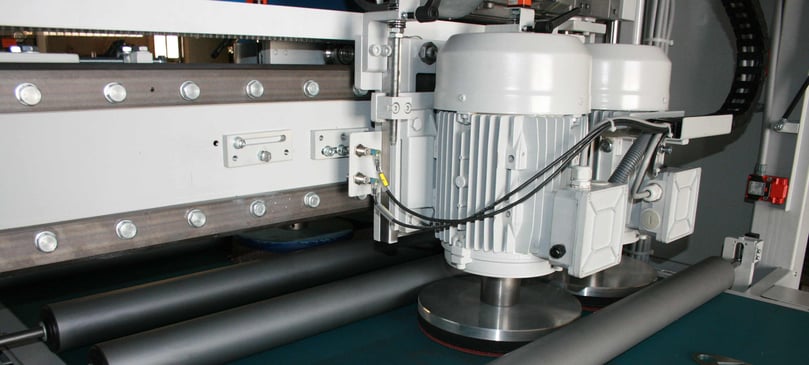
It’s one of the more puzzling questions for people in our industry to answer: Which deburring machinery option is best for my application: wet or dry? In this week’s blog post, we’ll try to tackle this question by looking at some of the pros and cons. If you’re looking to remove metal burrs using a deburring machine, here are some things to consider.
Costs
Let’s start with cost. The price of a wet deburring machine – no matter which manufacturer you choose – is typically 30 percent more than a dry machine.
However, a dry machine requires a dust collector to remove the particulate produced during grinding. And if you mix metals, you’ll need to use a wet dust collector to remove the risk of a fire.
The water in this collector acts as a filter and collects debris, which settles in the base of the collector and can be easily removed with a scoop.
 Wet machines, on the other hand, usually use chemicals to protect against corrosion. These chemicals are expensive, and need to be set at the right mixture, and tested almost daily with a refractometer to maintain the correct balance. This is a critical point: When too many chemicals are present, gumming occurs. When the chemical balance is too low, the machinery can rust.
Wet machines, on the other hand, usually use chemicals to protect against corrosion. These chemicals are expensive, and need to be set at the right mixture, and tested almost daily with a refractometer to maintain the correct balance. This is a critical point: When too many chemicals are present, gumming occurs. When the chemical balance is too low, the machinery can rust.
Another consideration involves the coolant used in wet deburring machines. Just like the oil in a car, this coolant needs to be changed depending on the usage of the machine. The coolant is considered a hazardous waste, and disposing of it can be expensive.
There are some upsides to a wet system. They have a longer abrasive belt life, and when the machine is maintained properly and parts are clean when they exit the deburring machine.
If the machine’s manufacturer has fashioned a quality air knife and has sufficient squeegee rollers to remove the bulk of the coolant, they will stay clean.
If chemicals are not properly maintained, you can end up with oily parts. And if parts are not completely dry, they can rust quickly.
Life expectancy
One last thing to consider is the life expectancy of wet and dry machines. If you take care of it and follow all the recommended maintenance steps, a wet machine will last you, at most, 12 to 15 years. A dry machine, on the other hand, will be around for twice as long, given proper cleaning and lubrication.
If you’d like to learn more about the differences between these two machine options, contact AM Machinery Sales. Our team can educate and assist you with choosing the right metal deburring machine for your application.



